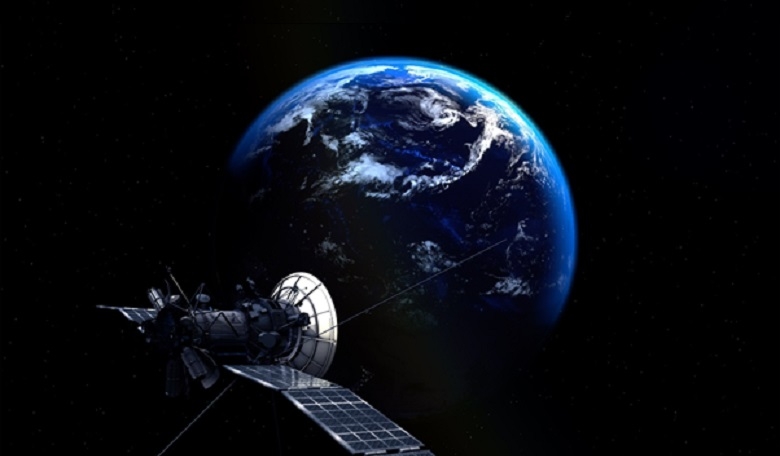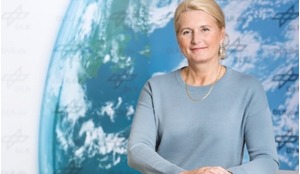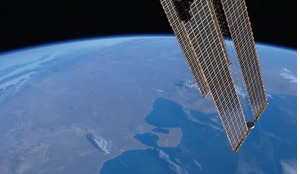The second quantum revolution is taking advantage of the NewSpace race. In this article, Dr Sonali Mohapatra tries to unveil the mystery behind quantum key distribution and why onboarding quantum technologies to space using small satellites is advantageous for our global future.
From time immemorial, humans have dreamt of space exploration, curiosity about the outer space being one of the biggest driving factors in the progress of human knowledge.
On the other hand, on the very small scales, some of the most interesting discoveries in the last decade have been in the field of quantum mechanics which have laid bare the curious uncertain reality of our world. Today, we are already for a long time manipulating single quantum particles, starting from electrons to protons - take into account electricity, for instance - hundreds of electrons humming along in wires all around us, making our world light up. As part of the second quantum revolution, we are going even further. Quantum information, which had been the stuff of theory for a long time, is making big progress in areas such as quantum entanglement, teleportation and key distribution and is pushing the frontiers of the technological field. With the advent of quantum computers, the day is not far off when our world would be the stuff we see on sci-fi movies.
Today our world deals with huge amounts of digital information every day and thus, it is very important to ensure the security of that information. If like me, you are someone who has a cell phone, has passwords for websites, does online banking, or even just goes to an ATM, you are someone who is relying on cryptography to secure your information. Currently, this is done using public-keys which rely on the complexity of certain mathematical calculations which take computers an inordinate amount of time to break. But once we have powerful enough quantum computers with a few thousand stable qubits, the day is not far off when a quantum computer can break these keys in seconds putting all of our information at risk. With the global cost of cyber-crime currently valued at $2 trillion (Juniper Research, 2019), it might even be the case that large amounts of data are currently being stored by cybercrime syndicates with hopes of cracking them once commercial grade quantum computers become available.
This is where quantum cryptographic protocols such as quantum key distribution (QKD) come into the picture. Unlike classical cryptography, quantum key distribution either uses the inherent uncertainty in the states of quantum particles like photons or quantum entanglement to securely set a quantum key between two parties which would be indefinitely secure even from the threat of quantum computers. One of the biggest advantages of quantum cryptography over classical cryptography is that an eavesdropper who tries to intercept quantum information mid-air will always be detected! This is because measuring quantum states always alters them. Combine this with the fact that it is impossible to clone quantum states perfectly (something called the “No Cloning Theorem”), an eavesdropper cannot replace these altered states by exact copies to remain hidden. Using this phenomenon, there are already quite a few terrestrial commercial QKD systems available and a few QKD networks laid in various cities around the world.
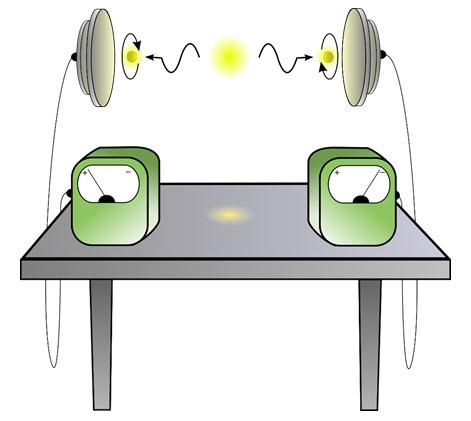 Cartoon representing free space photon transmission between transmitter and receiver.
Cartoon representing free space photon transmission between transmitter and receiver.
However, trying to send single or entangled photons on earth quickly runs into problems due to the presence of the atmosphere since photons collide with the air and lose a lot of energy and so can only travel a few hundred kilometres before the signal becomes too weak to detect. Even fibre optic cables lead to large losses of signals thus, without finding a solution which is scalable, it seemed like it would be very hard to make a global internet or global secure network using quantum cryptography which can span different countries augmenting existing encryption and communication networks around the world. Quantum repeaters remain a potential solution, but in practise, they have never been demonstrated. However, recently scientists have figured out that space could be used as an enabler to augment and expand existing terrestrial quantum networks. What if we could send photons from outer space? The lack of atmosphere in the path of the photons for most of the way down would solve the problem of signal losses. A satellite in a low earth orbit could easily act as a relay between different ground stations who wanted to communicate securely and wanted to share a secret key.
If fact, what if I told you that the second quantum revolution is already here on our doorsteps where scientists and engineers are taking the frontiers of quantum theory to space, thus bringing together two of humanities greatest mysteries. Imagine a constellation of small satellites in low Earth orbits around the earth which manage to make secure communication between distant corners of the earth a reality using quantum communication? That is precisely what projects around the world are currently trying to do.
In August 2016, China’s MICIUS satellite became the first to demonstrate satellite to earth Quantum Key Distribution. By using a secret key transmitted by the satellite to ground stations, China and Austria became the first two countries to perform a video conference encrypted fully and end to end.
As a Space Quantum Technologies Developer, I work at the cutting edge of translating quantum theory into real payloads on satellites proposing proof of concept demonstration missions. Currently, there are various other missions planned around the world to onboard various quantum technologies into space. One of the biggest and most developed quantum technologies that space is currently seeing is Quantum Key Distribution to augment encryption systems around the world. In Glasgow, this is the upcoming ROKS mission, led by Craft Prospect and collaborating with the University of Strathclyde and the University of Bristol where we are developing a Quantum Key Distribution payload in order to demonstrate satellite-to-earth single-photon QKD, which would make ROKS one of the early such missions in the world.
Other missions around the globe include the UK-Singapore bilateral collaboration RALspace which will test out an entangled photon source. QEYSSat in Canada will onboard both a WCP source on their microsatellite in collaboration with UK researchers and SMEs as well as an indigenous entangled source on the ground. Germany, early this year also launched their quantum comms CubeSat, and the US and India also have their own upcoming missions. These little CubeSats which started off as cute solutions to allow university students to get hands-on experience with satellites will now be our personal R2-D2s which go out into space to iron out the kinks before we take a leap into science fiction.
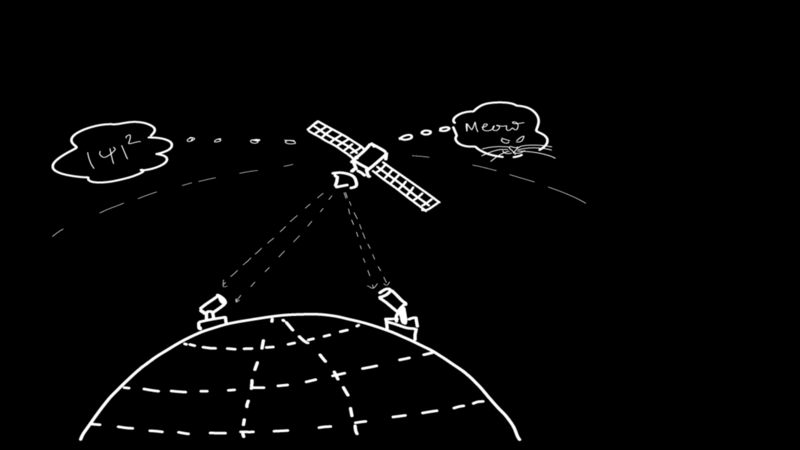 Cartoon drawn by Dr Sonali Mohapatra showing QKD using CubeSats enabling secure communication within two groundstation on Earth.
Cartoon drawn by Dr Sonali Mohapatra showing QKD using CubeSats enabling secure communication within two groundstation on Earth.
Apart from QKD, other quantum technologies such as cold atoms sensors with a variety of different accessories around them can improve our resilience by giving us precise timing measurements using quantum clocks, predicting space weather events using magnetometers and giving us more up to date resource information under the earth using quantum gravimeters and so on. The challenge lies in miniaturising these systems as well as testing them out for space-readiness. The lack of an atmosphere and the presence of microgravity in space, also makes it the perfect environment to conduct fundamental physics experiments and many such experiments are already being sent out, especially using CubeSats, because of their cost-effectiveness and fast deployability. The future of such constellations will include inter-satellite links, links to receivers on high altitude platforms (HAPS), on ships and on airplanes to improve navigation.
From using electricity to sending quantum objects out into space - the journey of humankind till now in the quantum domain has been exciting to say the least. Every day we are progressing in small steps which are sure to be big leaps in the history of humanity. This new era calls for bigger and better collaborations and a rapid shift to accommodate the need for more and more technical skills in this area, and to meet this demand, there are various initiatives already being rolled out, both by governments around the world as well as by private companies and start-ups. The implementation of these technologies as well as the dream of a global quantum communication infrastructure surely has challenges along the way that need to be mitigated. The future is uncertain as always, but it is for sure that the developments in this field are progressing at an unprecedented rate and are definitely one to keep an eye on.
About the author
Dr Sonali Mohapatra is a Space Quantum Technologies Developer at the space engineering company, Craft Prospect. With a PhD in theoretical physics and various interdisciplinary experience, Sonali brings quantum expertise into the space sector and regularly writes and speaks about her research. With extensive experience in the EDI sector, Sonali is one of the founding members of the New Voices in Space Working group of the SSLC as well as sits on the board of QIndia. She is the founder of the queer/feminist platform, Carved Voices and the author of the poetry book, Leaking Ink.





